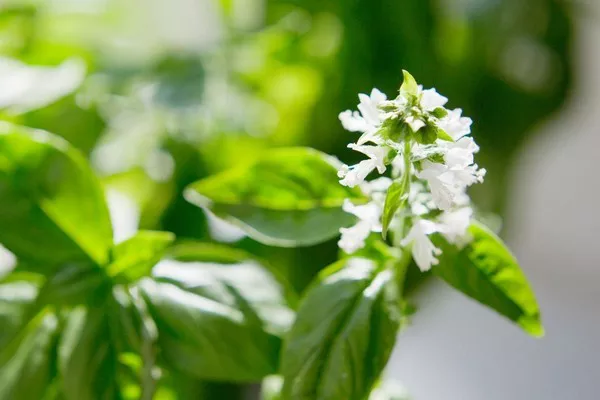Cauliflower, a nutritious and versatile vegetable, can sometimes fall prey to a variety of pests that threaten its growth and quality. As an essential part of a thriving garden, managing bugs on cauliflower plants is crucial to ensure a bountiful harvest. This article delves into the strategies and techniques for effectively getting rid of bugs on cauliflower plants to help you maintain the health and vitality of your crop.
Understanding Cauliflower Pest Management
Pests can wreak havoc on cauliflower plants, causing stunted growth, reduced yield, and diminished quality. Recognizing common pests and implementing proactive measures can help you maintain healthy plants and protect your investment.
1. Identifying Common Pests
Familiarize yourself with the pests that commonly affect cauliflower plants:
Cabbage Worms: Green caterpillars that chew holes in leaves and damage the cauliflower head.
Aphids: Tiny insects that suck sap from leaves, causing distortion and yellowing.
Flea Beetles: Small, jumping beetles that create tiny holes in leaves, giving them a shot-hole appearance.
Cabbage Loopers: Another type of caterpillar that feeds on leaves and can cause significant damage.
2. Prevention and Early Detection
Implementing preventive measures and monitoring your cauliflower plants regularly can help you catch pest infestations early:
Crop Rotation: Avoid planting cauliflower in the same spot every year to disrupt pest life cycles.
Companion Planting: Planting cauliflower alongside pest-repelling plants like marigolds and garlic can deter insects.
Physical Barriers: Covering young plants with row covers can prevent pests from laying eggs on them.
Regular Inspections: Regularly inspect your plants for signs of pests, such as chewed leaves, holes, or egg clusters.
Getting Rid of Bugs on Cauliflower Plants
1. Manual Removal
For smaller infestations, manually removing pests can be effective:
Handpicking: Inspect your plants and physically remove pests, dropping them into a bucket of soapy water.
Pruning: Remove heavily infested leaves to prevent the pests from spreading.
2. Natural Remedies
Several natural remedies can help manage pests on cauliflower plants:
Neem Oil: Neem oil is a natural insecticide that disrupts pest growth and development.
Insecticidal Soap: Soap solutions can suffocate pests like aphids and mites on contact.
Diatomaceous Earth: This powdery substance, derived from fossilized algae, damages the exoskeletons of insects.
3. Biological Control
Introducing beneficial insects can help control pest populations:
Ladybugs: Ladybugs are voracious aphid eaters and can help keep aphid populations in check.
Parasitic Wasps: These tiny wasps lay eggs inside caterpillars, ultimately killing them.
Nematodes: Beneficial nematodes are microscopic worms that attack and kill soil-dwelling pests.
Optimal Conditions for Bug Management
Creating an environment that is less favorable for pests is a key component of effective bug management for cauliflower plants:
1. Proper Plant Spacing
Ensure adequate spacing between cauliflower plants to promote airflow and reduce conditions favorable to pests.
2. Water Management
Avoid overwatering, as excess moisture can attract pests. Water at the base of the plants to keep foliage dry.
3. Soil Health
Healthy soil promotes robust plants that are more resilient to pest attacks. Use organic matter to enrich the soil and encourage beneficial microorganisms.
4. Weed Control
Keep the area around cauliflower plants weed-free, as weeds can harbor pests.
Maintaining Healthy Cauliflower Plants
Effective bug management is just one aspect of maintaining healthy cauliflower plants. Here are additional topics to consider:
1. Fertilization
Properly fertilized plants are better equipped to resist pests. Apply balanced fertilizers according to the recommended schedule.
2. Disease Prevention
Diseases can weaken cauliflower plants, making them more susceptible to pests. Practice good sanitation and choose disease-resistant varieties.
3. Harvesting Timely
Harvest cauliflower heads promptly when they reach the desired size, as overripe heads can attract pests.
4. Seasonal Care
Adjust your pest management approach based on the season. Some pests are more active during specific times of the year.
5. Organic Solutions
If you prefer organic methods, explore organic insecticides and remedies to manage pests on your cauliflower plants.
Conclusion
Managing bugs on cauliflower plants requires vigilance, a multifaceted approach, and a deep understanding of the pests and their behaviors. By identifying common pests, implementing preventive measures, and utilizing manual, natural, and biological control methods, you can ensure the health and productivity of your cauliflower crop. Additionally, maintaining optimal growing conditions, practicing good soil management, and addressing related topics like fertilization and disease prevention contribute to a comprehensive strategy for successful cauliflower cultivation. Remember that persistence and adaptability are key as you navigate the challenges of pest management, ultimately reaping the rewards of a thriving and productive cauliflower garden.


